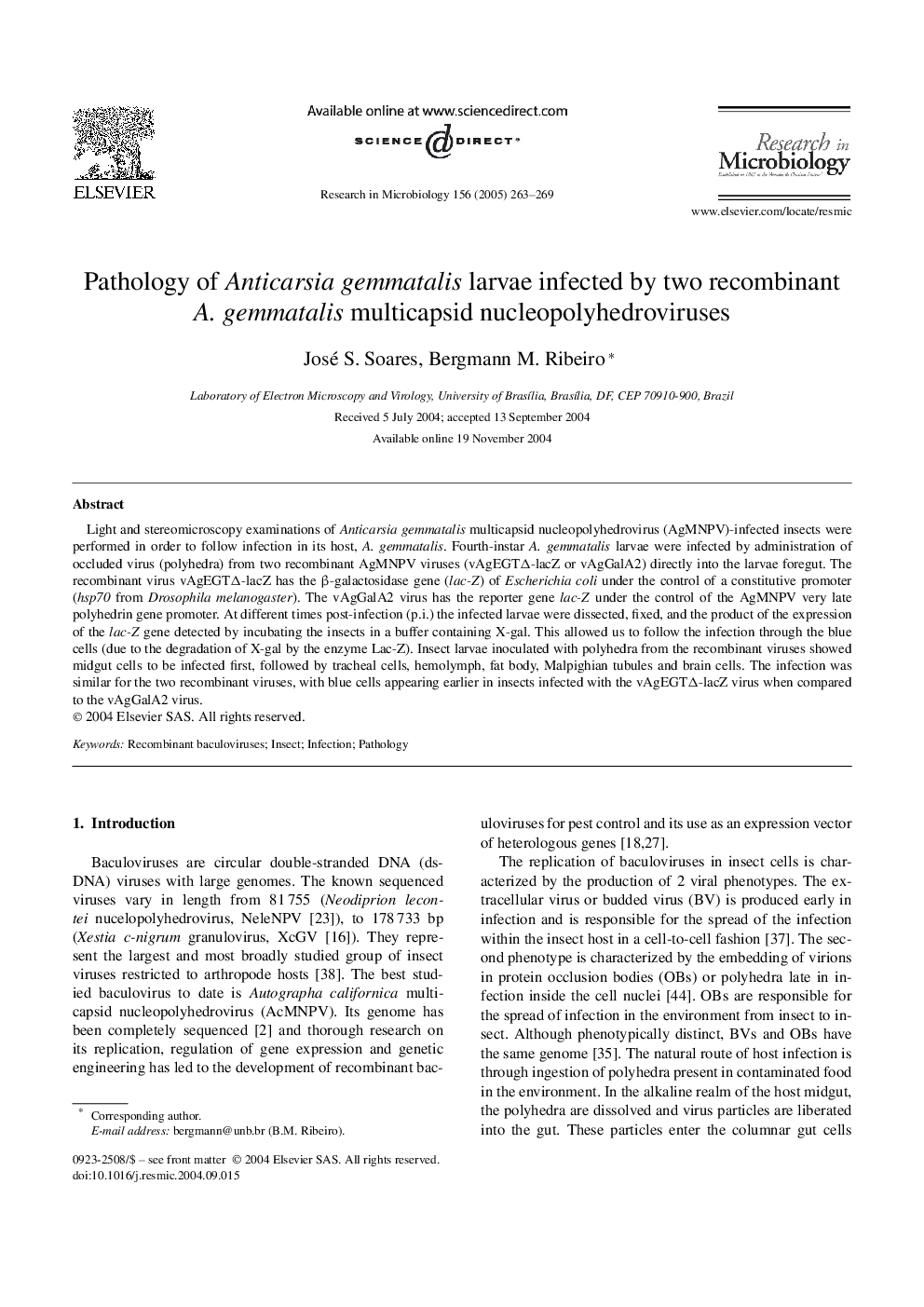| Article ID | Journal | Published Year | Pages | File Type |
|---|---|---|---|---|
| 9440066 | Research in Microbiology | 2005 | 7 Pages |
Abstract
Light and stereomicroscopy examinations of Anticarsia gemmatalis multicapsid nucleopolyhedrovirus (AgMNPV)-infected insects were performed in order to follow infection in its host, A. gemmatalis. Fourth-instar A. gemmatalis larvae were infected by administration of occluded virus (polyhedra) from two recombinant AgMNPV viruses (vAgEGTÎ-lacZ or vAgGalA2) directly into the larvae foregut. The recombinant virus vAgEGTÎ-lacZ has the β-galactosidase gene (lac-Z) of Escherichia coli under the control of a constitutive promoter (hsp70 from Drosophila melanogaster). The vAgGalA2 virus has the reporter gene lac-Z under the control of the AgMNPV very late polyhedrin gene promoter. At different times post-infection (p.i.) the infected larvae were dissected, fixed, and the product of the expression of the lac-Z gene detected by incubating the insects in a buffer containing X-gal. This allowed us to follow the infection through the blue cells (due to the degradation of X-gal by the enzyme Lac-Z). Insect larvae inoculated with polyhedra from the recombinant viruses showed midgut cells to be infected first, followed by tracheal cells, hemolymph, fat body, Malpighian tubules and brain cells. The infection was similar for the two recombinant viruses, with blue cells appearing earlier in insects infected with the vAgEGTÎ-lacZ virus when compared to the vAgGalA2 virus.
Related Topics
Life Sciences
Immunology and Microbiology
Applied Microbiology and Biotechnology
Authors
José S. Soares, Bergmann M. Ribeiro,
